Field Thistle
Field Thistle
Cirsium discolor L.
Asteraceae (Aster Family)
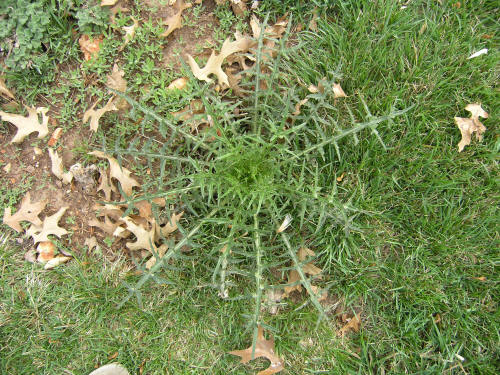
▲ first year rosette
▲ young plant
▲ young plant showing leaf underside (whitish)
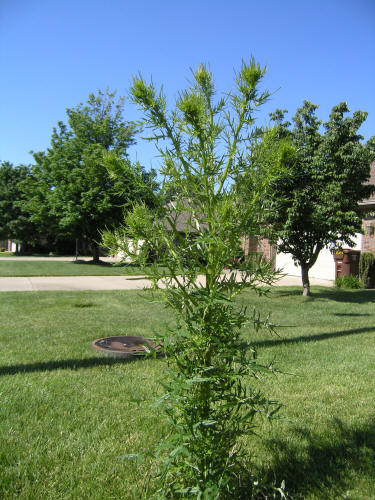
▲ ▼ bolting plants
▲ stem and leaves

▲ ▼ flowering plants

▲ ▼ flower buds, showing leafy bracts just below head inflorescences
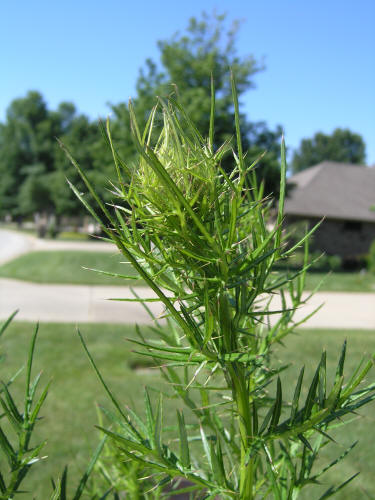
▲ ▼ flower, with many narrow leaf-like bracts around inflorescence
▲ ▼ flower, with many narrow leaf-like bracts around inflorescence
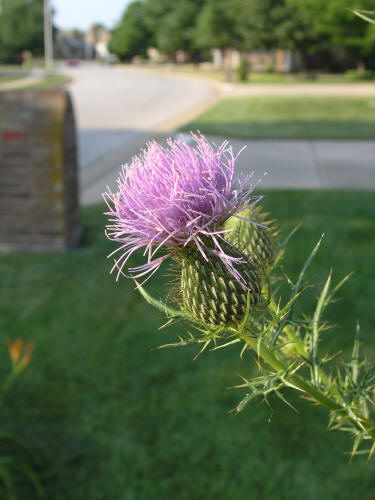
▲ flower, showing the narrow spines and white marks on bracts below flowers
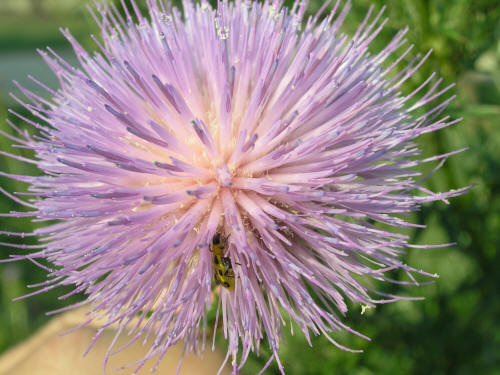
▲ flower close-up
Cirsium discolor (Muhl. ex Willd.) Spreng., Field Thistle: (Bayer Code: CIRDI; US Code: CIDI)
- Biennial or simple perennial weed common in southwest Missouri that grows 2-6 feet tall
- Stems are green, ridged, sometimes with whitish hairs
- Leaves are lobed, hairy, green on top and white underneath, with spines along their margins, especially at tips of lobes
- First year rosette leaves are lobed, as well as flowering stem leaves
- Flower heads are 1-2 inches diameter, with pinkish-purple ray flowers
- Base of head is urn-shaped, with lanceolate bracts with whitish midrib and outward pointing tan to yellow spines at their tip
- Just below head are several closely spaced, small, lobed leaves forming a sort of rosette below the inflorescence
- Found in pastures, non-crop areas; prefers moister soils
Similar species:
- Tall Thistle (Cirsium altissimum) another native thistle also has white leaf undersides and flower heads similar to tall thistle, but tall thistle may have unlobed or lobed leaves in both first-year rosettes and along the upright stems, and the heads lack the rosette of small leaves immediately below them.
- Bull Thistle (Cirsium vulgare) is a non-native, invasive thistle that has green leaf undersides, and leaf bases extend down the stem to produce some spiny wings; also green cylindrical spines extend out from the bracts below the inflorescence, and there are many cobweb-like hairs wrapped around these green spines
This is one of the native thistles that is sometimes mistaken for an invasive thistle species. Native thistles provide food and nectar for native insects (including bees and butterflies), birds and other animals, and generally should not be killed indiscriminately. Maintaining proper grazing levels can often reduce their unwanted increase in pastures and rangeland.
(Updated January 24, 2019)